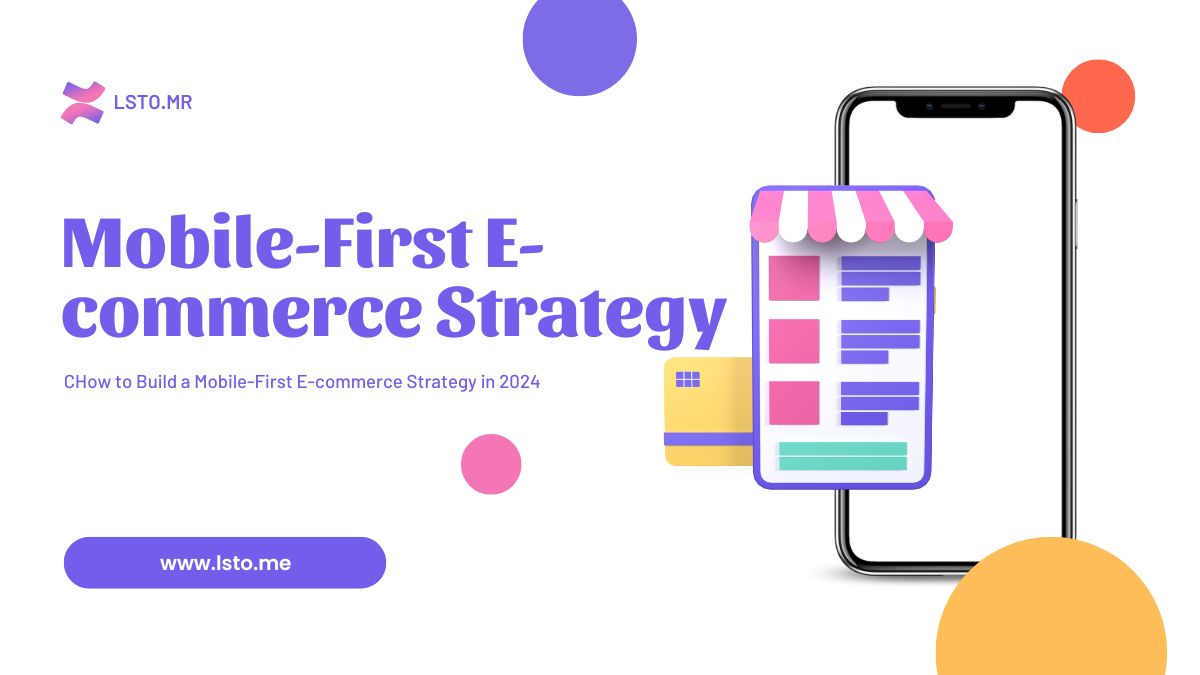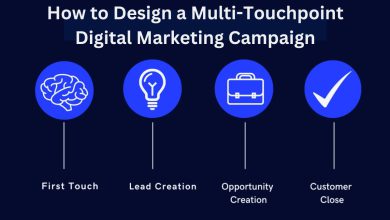
In the digital age, mobile devices dominate online business, especially e-commerce. By 2024, it is projected that over 70% of e-commerce sales will be made via mobile devices. For businesses aiming to thrive in this landscape, adopting a mobile-first e-commerce strategy isn’t just an option—it’s a necessity.
A mobile-first approach means prioritizing your website or app’s mobile experience. This ensures a seamless, enjoyable experience for customers on any device. In this blog post, we’ll explore why a mobile-first strategy is essential, and how to build one that drives results in 2024.
Why Mobile-First Matters in E-commerce
Before diving into how to build a mobile-first e-commerce strategy, let’s explore why it’s so critical.
1. Mobile Usage is Dominating
As of 2023, mobile traffic accounts for over 60% of global website visits. With more people using smartphones and tablets to shop, businesses that don’t optimize for mobile are missing a large audience.
2. Higher Conversion Potential
Mobile shoppers expect fast, simple, and efficient shopping experiences. When businesses deliver that, conversion rates improve. In fact, m-commerce (mobile commerce) is expected to generate over $510 billion in revenue by 2024. A mobile-first approach ensures you capitalize on this growing trend.
3. Mobile-First Indexing
In recent years, Google has shifted to mobile-first indexing. It means the mobile version of your website is now prioritized in search rankings. If your site isn’t mobile-optimized, it will likely hurt your SEO. This will reduce your visibility and organic traffic.
4. Changing Consumer Behavior
People’s shopping habits have evolved. Customers expect to compare prices, read reviews, and make purchases on the go. A mobile-friendly website builds trust. It boosts user experience and drives sales. It must provide a smooth experience from start to finish.
Key Components of a Mobile-First E-commerce Strategy
1. Responsive Web Design
The foundation of any mobile-first strategy is a responsive web design. This approach makes your website adapt to any device’s screen size and resolution. It provides an optimal user experience on smartphones, tablets, and desktops.
Fluid Grids: Use fluid grids that allow elements to resize proportionally based on the screen size.
Flexible Images: Make sure images scale appropriately for mobile devices without losing quality or taking too long to load.
Media Queries: Implement media queries in your CSS to apply different styles based on the device type (mobile, tablet, desktop).
Thumb-Friendly Navigation: Ensure that buttons, menus, and clickable elements are large enough and easy to navigate with thumbs.
2. Prioritize Site Speed
Mobile users are notorious for being impatient. According to Google, 53% of mobile site visitors will leave a page if it takes more than three seconds to load. A slow website loses sales and hurts your search engine ranking.
Tips for Optimizing Mobile Site Speed:
Use Accelerated Mobile Pages (AMP): Implement AMP to create fast-loading versions of your site’s pages.
Minimize HTTP Requests: Reduce the number of images, scripts, and files that your site loads.
Optimize Images: Compress images without sacrificing quality. Use modern formats like WebP for faster loading.
Leverage Browser Caching: Allow browsers to cache certain elements of your website, so they load more quickly when users return.
Minify CSS, JavaScript, and HTML: Remove unnecessary spaces and comments in your code to reduce file sizes and improve load times.
3. Streamline the Checkout Process
The checkout process is where most mobile users abandon their carts. 69% of shopping carts are abandoned before checkout. Mobile users are a big part of this. To cut abandonment rates and boost conversions, make checkout smooth.
Best Practices for Mobile Checkout Optimization:
Guest Checkout: Allow customers to complete their purchase without creating an account.
Autofill and Mobile Payment Options: Enable autofill features for forms and integrate popular mobile payment methods like Apple Pay, Google Pay, and PayPal.
Progress Indicators: Use visual progress indicators that show customers how many steps remain in the checkout process.
Minimize Form Fields: Only ask for essential information and make it easy to fill out forms on mobile devices.
Offer Multiple Payment Methods: Give users the option to pay with credit cards, digital wallets, and other alternative methods.
4. Mobile SEO Optimization
With mobile-first indexing, it’s crucial to optimize your site for mobile SEO. To succeed in 2024, your e-commerce store needs to rank well on Google’s mobile search results.
Key Mobile SEO Strategies:
Mobile-Friendly Design: Ensure your website is fully optimized for mobile. Use Google’s Mobile-Friendly Test to identify any issues.
Optimize for Voice Search: With more users conducting voice searches via their smartphones, you need to optimize your site for voice search queries. Target long-tail keywords and use natural language.
Focus on Local SEO: Many mobile searches are location-based. Make sure your site is optimized for local SEO by using location-based keywords and updating your Google My Business profile.
Use Schema Markup: Implement schema markup to help search engines understand the context of your content and display rich results, like product ratings, in the search results.
5. Incorporate Mobile-First Marketing
Your e-commerce strategy shouldn’t stop at just your website. Mobile-first marketing is crucial for driving traffic and engagement to your mobile-friendly site.
Mobile Marketing Tactics:
SMS Marketing: Send targeted SMS messages to your customer base with special offers, product announcements, and reminders.
Push Notifications: Use push notifications through your mobile app or website to engage customers and encourage repeat visits.
Mobile-Friendly Emails: Ensure your email marketing campaigns are optimized for mobile, with short, punchy subject lines and easily scannable content.
Social Media Integration: Since many mobile users access e-commerce websites via social media platforms, ensure your social media ads, posts, and pages are optimized for mobile viewing and interaction.
Influencer Marketing: Partner with influencers on Instagram, TikTok, or other mobile-heavy platforms to drive traffic and conversions through authentic recommendations.
6. Leverage Progressive Web Apps (PWAs)
Progressive Web Apps (PWAs) are web apps. They provide an app-like experience on mobile browsers. They are fast, reliable, and can work offline. So, they are ideal for mobile-first e-commerce.
Benefits of PWAs for E-commerce:
Improved Performance: PWAs load faster and provide a smoother browsing experience than traditional websites.
Offline Access: PWAs can cache content, enabling users to browse your store even without an internet connection.
Push Notifications: With PWAs, you can send push notifications directly to users, just like a native app, to keep them engaged.
App-Like Experience Without App Store Hassles: PWAs offer an app-like experience without the need for customers to download a separate app from an app store.
7. Personalize the Mobile Experience
Mobile users expect a personalized experience. You can use data on their preferences, location, and behavior. This can help you tailor your website and marketing to their needs.
Personalization Techniques for Mobile E-commerce:
Dynamic Content: Use dynamic content to show personalized product recommendations based on browsing history, purchase history, and location.
Location-Based Offers: Target customers with location-based promotions or discounts when they are near your physical store or service area.
Behavior-Triggered Messages: Send personalized messages via email or SMS based on user behavior, such as abandoned cart reminders or product recommendations.
8. Use Analytics to Monitor Performance
Finally, track and analyze your site’s performance on mobile devices. This will improve your mobile-first e-commerce strategy.
Key Mobile Analytics Metrics to Monitor:
Bounce Rate: The percentage of users who leave your website after viewing only one page.
Mobile Conversion Rate: The percentage of mobile users who complete a purchase or desired action.
Page Load Time: How quickly your pages load on mobile devices.
Mobile Traffic: The proportion of your total traffic that comes from mobile devices.
Cart Abandonment Rate: The percentage of users who add items to their cart but don’t complete the purchase.
Tools like Google Analytics, Hotjar, and Google Search Console can help you. They can monitor metrics and find areas to improve.
Conclusion
In 2024, a mobile-first e-commerce strategy is a must. It is key for businesses that want to stay competitive and boost sales.
As mobile commerce grows, businesses must prioritize:
Responsive design
Fast load speeds
An optimized mobile experience
This will help attract and retain customers.
A mobile-first strategy can deliver results. Focus on mobile SEO, a fast checkout, and personalization. Use modern tools like PWAs. In 2024, mobile trends will be key to your e-commerce success. Monitor your performance, stay agile, and adapt to them.




